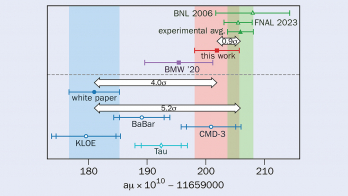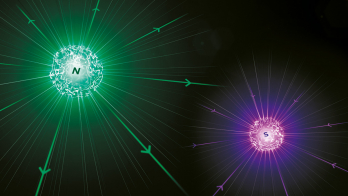Introduction to the Theory of the Universe: Hot Big Bang Theory
By Dmitry S Gorbunov and Valery A Rubakov
World Scientific
Hardback: £103 $158
Paperback: £51 $78
E-book: $200
Introduction to the Theory of the Universe: Cosmological Perturbations and Inflationary Theory
By Dmitry S Gorbunov and Valery A Rubakov
World Scientific
Hardback: £101 $156
Paperback: £49 $76
E-book: $203

When a field is developing as fast as modern particle astrophysics and cosmology, and in as many exciting and unexpected ways, it is difficult for textbooks to keep up. The two-volume Introduction to the Theory of the Early Universe by Dmitry Gorbunov and Valery Rubakov is an excellent addition to the field of theoretical cosmology that goes a long way towards filling the need for a fully modern pedagogical text. Rubakov, one of the outstanding masters of beyond-the-Standard Model physics, and his younger collaborator give an introduction to almost the entire field over the course of the two books.
The first book covers the basic physics of the early universe, including thorough discussions of famous successes, such as big bang nucleosynthesis, as well as more speculative topics, such as theories of dark matter and its genesis, baryogenesis, phase transitions and soliton physics – all of which receive much more coverage than is usual. As the choice of topics indicates, the approach in this volume tends to be from the perspective of particle theory, usefully complementing some of the more astrophysically and observationally oriented texts.

The second volume focuses on cosmological perturbations – where the vast amounts of data coming from cosmic-microwave background and large-scale structure observations have transformed cosmology into a precision science – and the related theory of inflation, which is our best guess for the dynamics that generate the perturbations. Both volumes contain notably insightful treatments of many topics and there is a large variety of problems for the student distributed throughout the text, in addition to extensive appendices on background material.
Naturally, there are some missing topics, particularly on the observational side, for example a discussion of direct and indirect detection of dark matter or of weak gravitational lensing. There are also some infelicities of language that a good editor would have corrected. However, for those wanting a modern successor to The Early Universe by Edward Kolb and Michael Turner (Perseus 1994) or John Peacock’s Cosmological Physics (CUP 1999), either for study of an unfamiliar topic or to recommend to PhD students to prepare them for research, the two volumes of Theory of the Early Universe are a fine choice and an excellent alternative to Steven Weinberg’s more formal Cosmology (OUP 2008).







